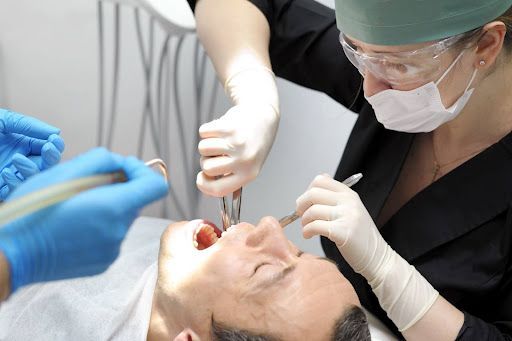Single Tooth Replacement: Titanium Style
December 11, 2013
Have you ever thought about the changes you would have to make if you lost both of your thumbs? I am sure we all take our thumbs for granted every day, because they are just there. We never have to think about the changes we would need to make if they became nonexistent. For instance, we wouldn’t be able to grip things very well, or give someone the thumbs up sign.
Then why is it, when we lose an adult tooth; we don’t think about the consequences associated with the loss. For example: speech problems, continuation of bone loss, and the weakening of other teeth (due to there being fewer teeth to use when eating and lack of stabilization.) Over a period of time you may even start to see movement and inclination of other teeth and the possible loss of those teeth as well.
An implant’s structure is similar to that of your natural tooth
Implants are a great option for replacing a missing tooth and if well taken care of, may last your lifetime. Implants are a device that is surgically placed into orofacial tissues and used for anchorage, function and/or esthetic purposes.
There are a few things that you as a patient will need before you can be a candidate for placement of implants. You will need to be a patient of good oral hygiene, meaning no current periodontal disease; and have adequate bone level. By visiting your dentist, you could have a complete exam to see if you are a candidate for dental implants. At your visit, you may expect a complete oral exam including: panoramic x-ray, periodontal exam, oral cancer screening, and a possible 3D imaging scan for ideal placement of implant.
If you are found to be a great candidate for implants there are a few different ways to proceed. If your tooth is not present and the bone level is adequate you could have the implant placed without much prep work. If the tooth is still present and needs to be extracted, you may be able to place the implant immediately after extraction or you may need to have bone grafting completed in order to build up your bone level. Having a bone graft completed will prolong the process a tad, but will be of great benefit in the long run. After having a bone graft, a patient will need to wait 3-4 months for the bone to regenerate and build itself to be a strong site for placement of an implant.
After your bone has reached a sufficient level, the implant is ready to be placed. Implant surgery consists of using a variety of different size diameter drivers to create a space for the titanium screw to be placed into the bone. Surgery will be finished by placing a healing cap, and sutures being placed. You should expect to have a series of visits following placement, to make sure the site is healing well and bone is integrating itself with the implant. After allowing 3-5 months of healing time and integration your implant is ready for the finishing process.
Your next step would be to have impressions taken for your new crowns. Your crown will be supported by an abutment that attaches to your new implant. Your doctor will take the time to check the shade to match the crown with your other teeth. After 2-3 weeks you can expect to have your crown and abutment fabricated and ready for delivery. Your hygienist and doctor will give you specific tools and instructions of how to care for your new addition to your smile.
The post Single Tooth Replacement: Titanium Style appeared first on Stephens Dentistry.







